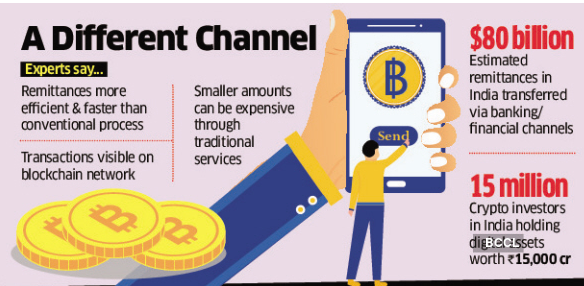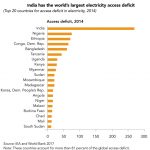By Prachi Arya
The evolution of the internet is underway. Users may soon experience the same kind of disorientation that was caused by the cataclysmic shift of the internet from English computer scientist Tim Berner Lee’s World Wide Web to social media-based Web 2.0.
The Information Technology Act, 2000 and the Indian internet law framework was put in place to solve a 20th century problem. The much-hyped ongoing metamorphosis of the internet to blockchain-based Web3 and virtual reality of the metaverse now drives real policy change. Both Web3 and Metaverse work on blockchain-based technologies.
Metaverse technology has repeatedly been compared to science fiction game worlds as in the novels ‘Snow Crash‘ and ‘Ready Player One‘. Using a virtual reality headset, users enter a world free of ordinary physical and societal limitations, supposedly without real-world consequences.
Perhaps, the most tangible thing in the metaverse is the invisible micropayments layer for affiliate services and secondary sales driven by cryptocurrency, tokens and other cryptoassets. This payments infrastructure is part of the financial backbone of the metaverse, and supports in-platform purchases such as virtual art for online services like Netflix.
Relying on cryptocurrency to pay for metaverse purchases is expected to vitiate problems like currency fluctuations, middlemen and war-related monetary sanctions. While digital products remain in the virtual realm, the money spent is really debited from user bank accounts that are connected to the cryptocurrency being used.
According to who you ask, there are thousands to more than 12,000 cryptoassets. Users are encouraged to do their own research before jumping on the crypto-wagon. For many, trying to comprehend cryptoassets, the underlying blockchain technology and the virtual reality it enables is like diving down a crypto-shaped rabbit hole. The knowledge-gap determines the haves and have-nots of the crypto economy.
Crypto gurus sell masterclasses, and online adult education videos are provided through various platforms like Udemy and Book My Show. An unregulated industry has gained momentum, taking many innocent consumers for a ride, and prompting regulators and watchdogs to issue warnings in many countries and regions, including in India.
However, experts like the intergovernmental organisation Financial Action Task Force have flagged data and identity protection concerns, among others, with the growing use of blockchain. Often used interchangeably, ‘tokens’ and ‘cryptocurrency’ are cryptoassets.
A recent report by Financial Stability Board (‘FSB’), an international watchdog of the global financial system, assessed that crypto asset market capitalisation rose 3.5 times in 2021 to a value of $2.6 trillion. However, cryptocurrency and tokens do not have the kind of real-world value that stocks, shares and fiat currency do. Its valuation determines its price as a digital commodity.
The token price, called transaction price, may be agreed upon by the community of buyers and sellers, and used to calculate profit and loss, rate of return, and performance of the asset. It varies and fluctuates everyday due to market activities. Tokens like Tether that are pegged to US dollars or gold, are not controlled by the crypto market. Supply is not controlled by the market either. The maximum (total) token supply is controlled by the company or the token’s pre-defined algorithm. For many cryptocurrencies like Bitcoin, the amount of tokens issued to the public is determined by the company during initial coin offering.
Supply may be inflationary (like Ether) or deflationary (like Binance coin). This depends on whether coins are mined, or destroyed to increase their value through coin burn, lockups and buy backs. When it comes to understanding different types of cryptoassets, the devil is in the details of daily fluctuations controlled by market forces of price and supply, and the few who rise to the top create a wealth gap caused by difference in patterns of investing, buying and selling.
The decentralized digital ledger replaces the function of trust, traditionally performed by middlemen like banks or governments, with a blockchain, relying on the strength of the cryptographic algorithm which secures it.
More controversially, it claims to solve the problem of technological monopolies taking over the internet. Much like content created on social media, cryptoassets like cryptocurrency are already valuable for tech giants. For instance, companies like Microsoft and PayPal have accepted cryptocurrencies for years now. Cryptoassets are also integral for a future of the internet founded on technologies like metaverse.
Metaverse is gaining the imagination of users, even if the technical know-how remains hidden. Metaverse imagines decentralized storage and access to information, including individual personal data as well as digital products and services. Regarding the role of decentralizion in the metaverse, entrepreneur, researcher and computer software developer Tony Parisi, an early pioneer in virtual reality, has written:
“The forces of decentralization are in play and gathering power. Decentralized Finance (DeFi), decentralized autonomous organizations (DAOs), Non-fungible tokens (NFTs) and other blockchain-based infrastructure have moved beyond experimentation and low return on investment to an early deployment phase.”
These technologies are already part of the foundation of the metaverse and will continue being deployed in virtual reality. Identity, data protection, payments and economics in the Metaverse will be cryptoassets. Unsurprisingly, cryptocurrency regulations are the fresh target of industry-driven policy change. While a stiff new crypto tax takes effect on July 1, the crypto industry in India is also weathering a plunge in trading volumes and payment processors cutting off crypto exchanges.
With the advent of the metaverse, it becomes imperative to analyse the implications of and growing concerns around legitimate and illegitimate use of cryptocurrency and other cryptoassets in India. There is a difference between how decentralization has been imagined and how it works in practice.
It is hard to ignore that the Web 2.0 tech companies like Microsoft, Amazon and Facebook have invested heavily in metaverse. These are only some of the centralizing market forces. The market for ethereum-based tokens or non-fungible tokens (‘NFTs’) has one major aggregator, OpenSea. Clearly there is a need to examine the centralizing authorities that threaten metaverse’s underlying goals of decentralization and overthrowing the centralizing forces of Web 2.0
Centralizing forces also include blockchain investment funds. For instance, Exchange Traded Funds (‘ETFs’) specialize in investing blockchain assets like stocks of companies in blockchain, virtual currencies, and crypto trading activity. ETFs include companies like Tesla, crypto exchanges like Coinbase, and financial institutions and tech companies like NVIDIA.
Scaling the use of cryptocurrency, especially unbacked coins like bitcoin and stablecoin by interconnecting with banks, financial institutions and investment funds, has major implications for global financial stability, according to the FSB report published in February 2022 referenced earlier. Often, the prices of stocks of these companies are affected by the hype around blockchain and the technologies it supports, giving them enough incentive to use crypto hype and confusion to their advantage.
Last month, the crypto market shed almost $2 trillion in value, triggering some concern that it could hurt the larger economy as compared to its last peak in November 2021, when the entire crypto market was valued at $3.1 trillion. One can’t help but wonder if the hype around blockchain based Web3 and metaverse is merely a case of history repeating itself. This time around, for virtual properties in a farcical world. (IPA Service)
Courtesy: The Leaflet

 India Still Among Top 20 Clean Energy Access-Deficit Countries
India Still Among Top 20 Clean Energy Access-Deficit Countries 